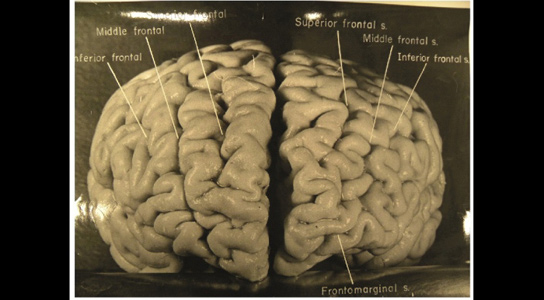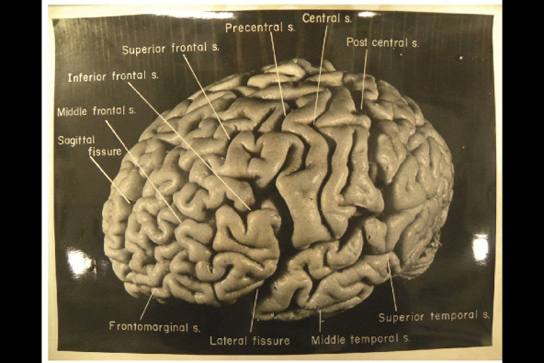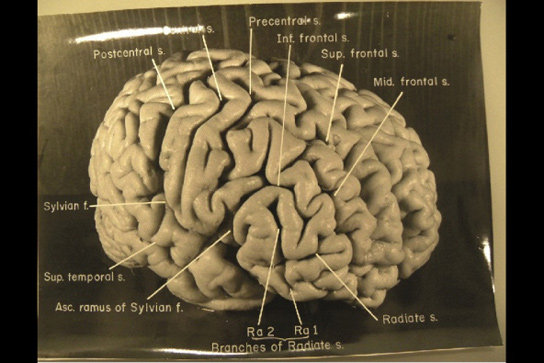
Photographs of Albert Einstein’s brain were taken shortly after his death, but were never analyzed in detail until now. The analysis has revealed several unique features of his brain, providing clues about the neural basis of his extraordinary mental abilities.
The scientists published their findings in the journal Brain. While doing Einstein’s autopsy, Thomas Harvey, a pathologist, removed the physicist’s brain and preserved it in formalin. Harvey then took dozens black and white photos of it before it was cut up. He separated it into 240 blocks and took tissue samples from each.

The autopsy revealed that Einstein’s brain was smaller than average, and the analyses showed the normal changes that happen with aging. Nothing more at the time was analyzed and the brain fragments were stored. Decades later, researchers asked Harvey for samples and noticed some unusual features while analyzing them.
In 1985, they showed that two parts of his brain contained an unusually large number of glia for every neuron. Another study showed that the parietal lobe lacks a furrow and operculum. This missing furrow might have enhanced the connections in this region, which is involved in the visual/spatial functions and mathematical skills like arithmetic.
Dean Falk, an anthropologist at Florida State University in Tallahassee and her colleagues obtained 12 of Harvey’s original photos from the National Museum of Health and Medicine in Silver Spring, Maryland. They analyzed them and compared the patterns of convoluted ridges and furrows with those of 85 other brains described in other studies.

Many of the photos were taken from unusual angles, and show structures not visible in photos that were analyzed previously. The most striking observation was the complexity and pattern of convolutions on certain parts of the cerebral cortex, especially in the prefrontal cortex and also the parietal lobes and visual cortex.
The prefrontal cortex is important for abstract thinking. The complex pattern of convolutions probably gave the region an unusual surface area, which might have contributed to his remarkable thought processes.
There was also an unusual feature in the right somatosensory cortex, which receives sensory information from the body. In this part, Einstein’s brain is expanded, which might have contributed to this accomplished violin playing.
According to Sandra Witelson, a behavioral neuroscientist at McMaster University in Hamilton, Canada, who discovered that the parietal operculum is missing from Einstein’s brain, the study’s biggest contribution may be in encouraging further studies. “It makes clear the location and accessibility of photographs and slides of Einstein’s brain,” she says. “This may serve as an incentive for other investigations of Einstein’s brain, and ultimately of any consequences of its anatomical variations.”
Reference: “The cerebral cortex of Albert Einstein: a description and preliminary analysis of unpublished photographs” by Dean Falk, Frederick E. Lepore and Adrianne Noe, 14 November 2012, Brain.
DOI: 10.1093/brain/aws295
3 Comments
If you think that this story is utter nonsense, your judgement is excellent.
Anybody will get Einstein`s brain, if he can work hard to learn throughout life. Our brain is constantly learning, something already known or something new. Learning is a continuous process till death. The learning does not confine itself to library studies. Even the daily experience is nothing but learning. Now, Prefrontal cortex of the brain is the seat of logical learning and its other side frontal cortex records images corresponding to that learning. The more one learns and uses his brain , more neuron`s grow in the grey matter. Since knowledge is simply confined to the skin effect of the brain, more area for storing is required since the cranial space is limited. This results in convolutions and `sulcus` in the histology of brain to offer more space for recording the neuronal connections. Thank You.
Fantastic discovery